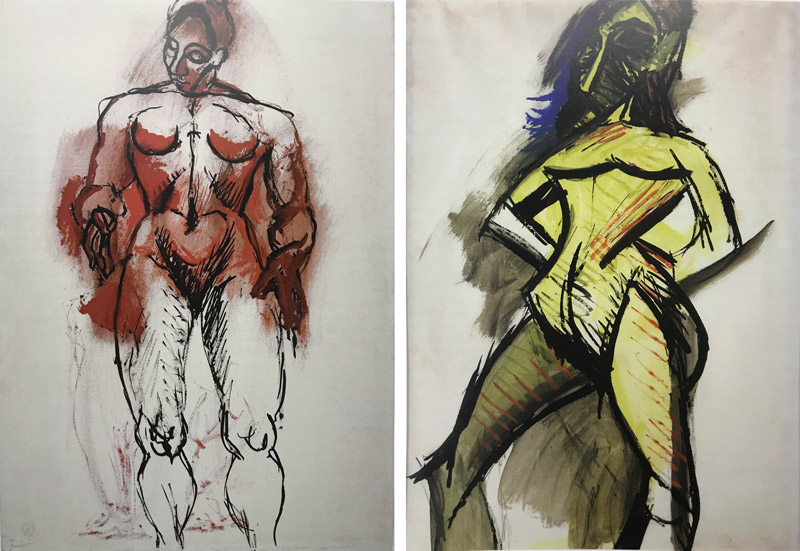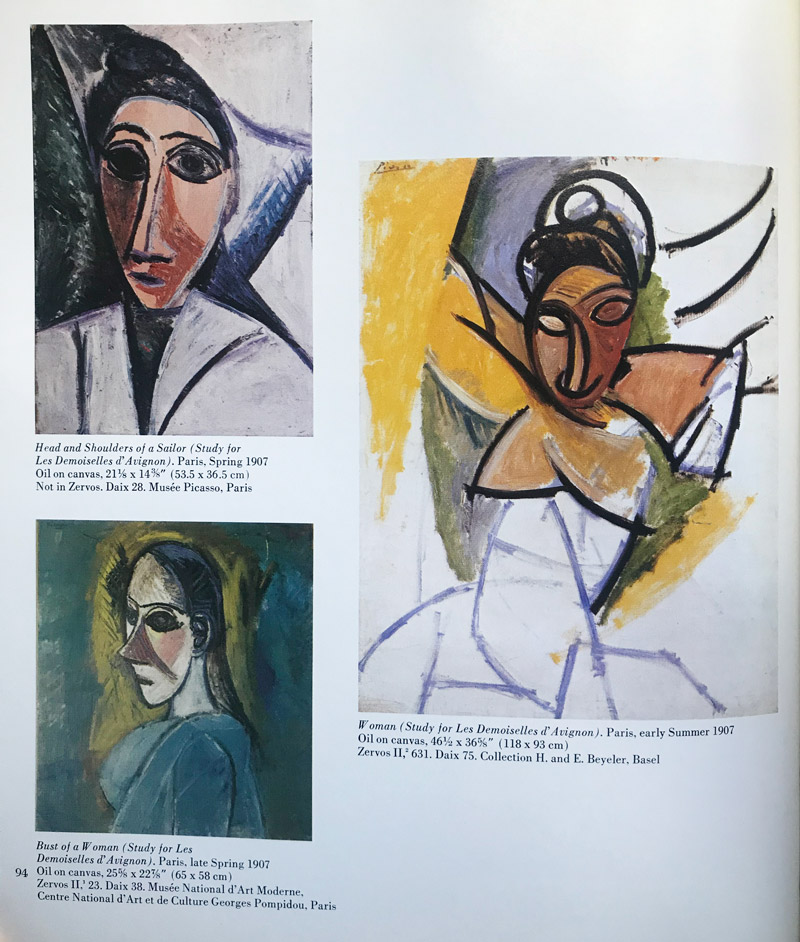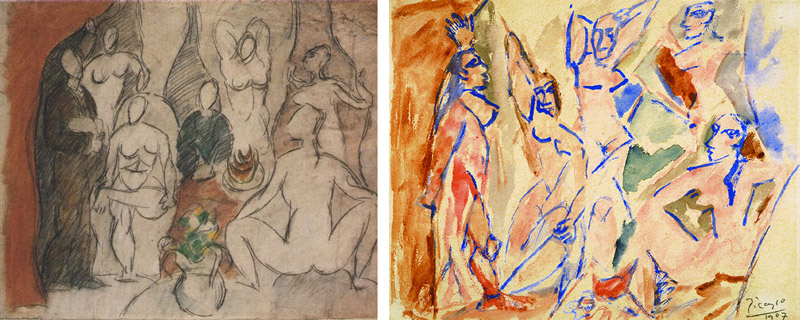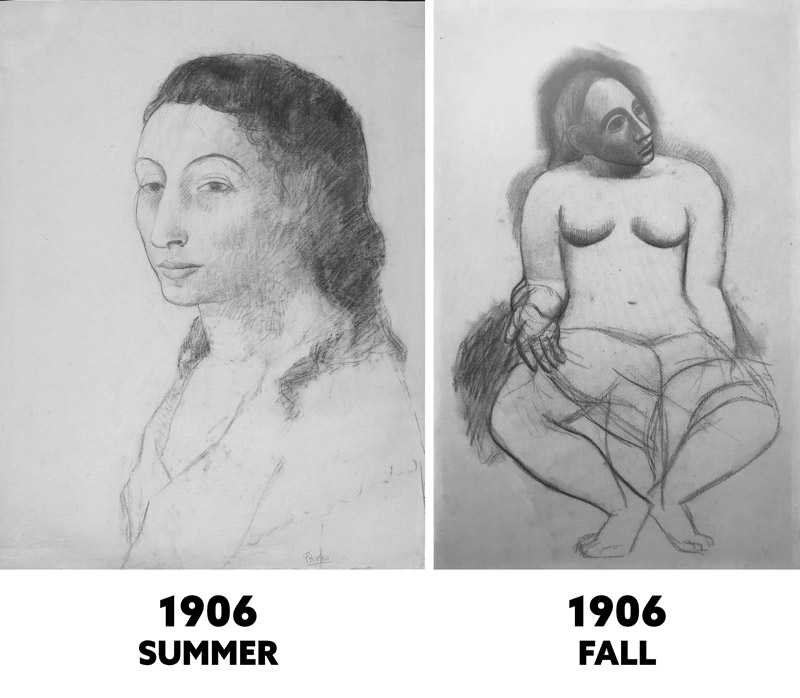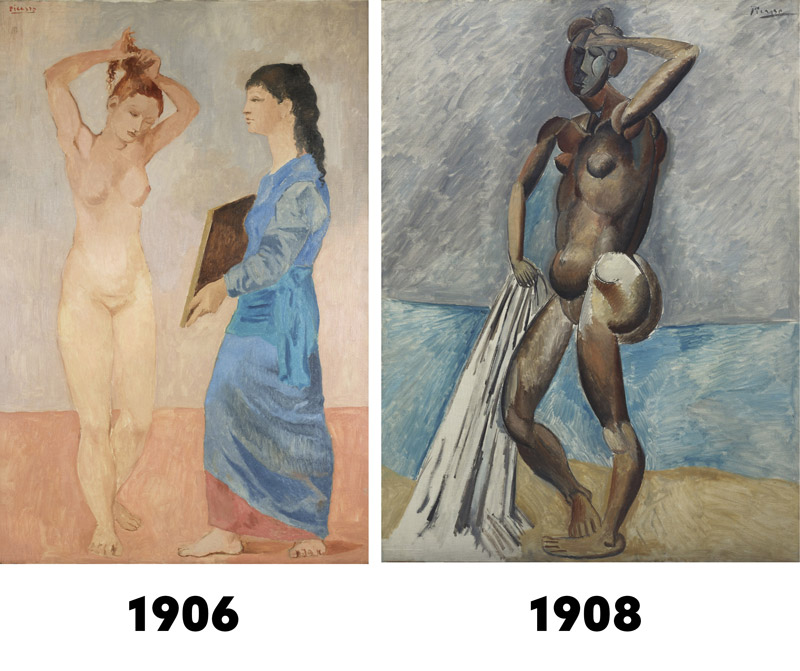How to Feverishly Develop Your Artistic Style
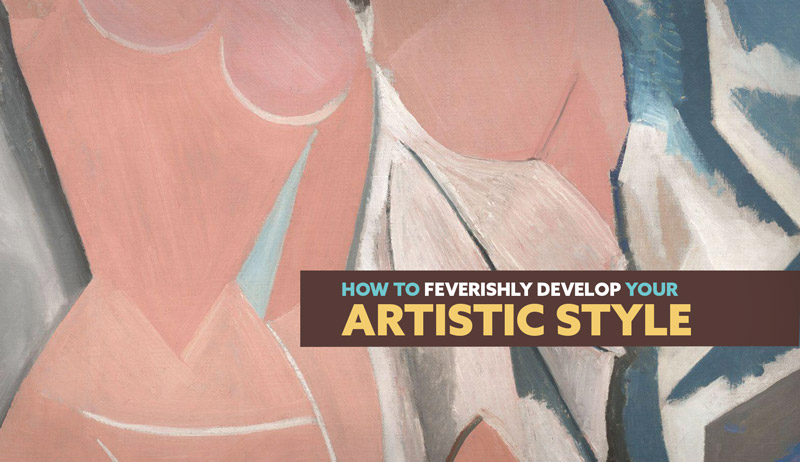
#607
Hey everyone, welcome back to all of the members. Thank for all of your amazing support!
Today we are going to dig deep into the process of developing your artistic style. This will save you time and effort in the long run, but it will require some enthusiastic energy. Are you ready for growth and change? Let’s find out now!
Analogy Developing Your Style
This article was inspired by reading “Picasso’s Drawings 1890-1921” and “Pablo Picasso: A Retrospective.” Within these books, they describe how intensely Picasso worked to develop a painting that would shock the art world. Something so grand that it would inevitably dethrone Henri Matisse (see Day 258) and make Picasso the leader of the Modern Art movement. The painting that achieved this great feat is called “Les Demoiselles d’Avignon” or “The Brothel of Avignon” and portrays five distorted, nude female figures. The “brothel” part of the image isn’t really evident, besides the hint of grapes and fruit near the bottom. You may have seen grapes being used in cinema to symbolize wealth and luxury; at least in shows like Caligula, A Clockwork Orange, and Game of Thrones.
“Picasso arrived at the final stage of Les Demoiselles through months of frenetic productivity during which he made hundreds of sketches, preparatory drawings, and independent works.” from Picasso Drawings 1890-1921
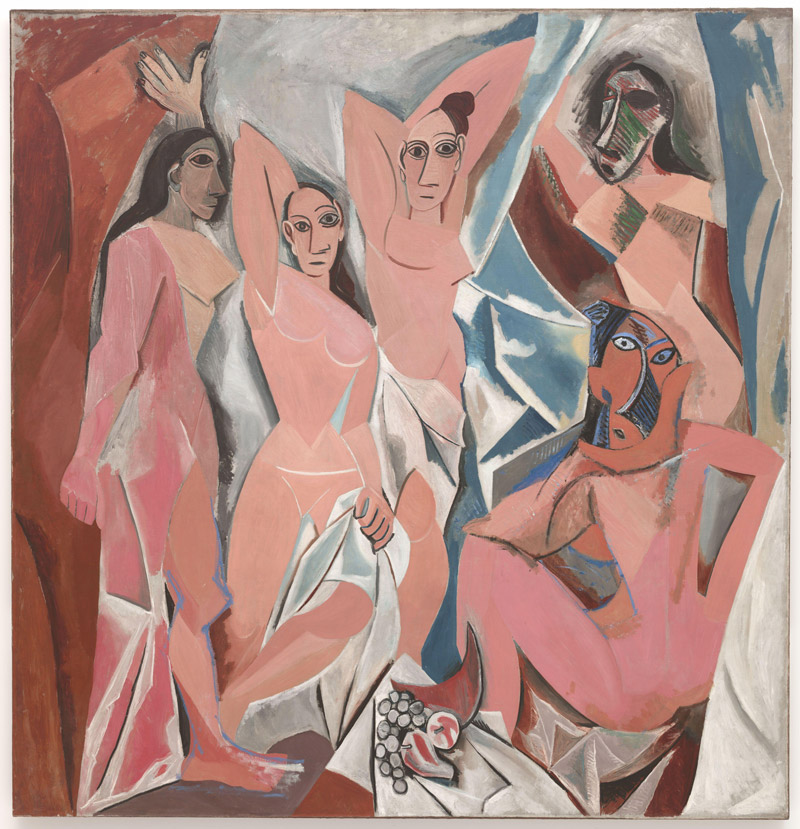
We’ll soon see the works of art that Picasso quickly pumped out to drastically change his artistic style (see Day 122), but first an analogy.
Most photographers start out taking photos of plants, pets, people, landscapes, insects…basically everything. Painters do the same, as well as cinematographers. It usually takes years and years to finally dial in what interests them the most. Then it takes several years to begin to develop those interests into a style. This all seems to echo the “10,000 hours” rule. Yet, instead of wasting precious time and bouncing around without direction, try sitting down with a focus (also read Deep Work by Cal Newport). One way to start is to list the pros and cons of each artist you’re interested in. Much like a girlfriend or boyfriend you had in high school.
Most teenagers in high school are still learning what attracts them to the opposite sex. Some observations are shallow and lack depth because they have minimal experience. They might create a pro and con list for Jenny who is pretty, smart, and happy, but chews her fingernails and is 6ft tall. Sally, on the other hand, has great hygiene, is ok looking, has long hair, but she isn’t the smartest and gets mad at the little things. The main way these kids can find out what works best for them is by trial and error, but there is a more efficient way to do it.
A method they can use to significantly reduce the confusion and heart ache they’ll experience as they learn what they’re attracted to is to dig deeper into the subject of relationships. They can read books or watch videos that talk about the topic of “How to avoid break ups” or “Top red flags of a bad relationship.” Things like this could give them a direction to work towards. Digging deeper and researching things will allow them to gain experience much quicker. Everyone knows that communication is the key to successful relationships, but this is a skill that needs developed. Most people learn communication by trial and error rather than seeking out knowledge that will help them improve (i.e. Crucial Conversations).
So, if artists take a moment to dig into some of their favorite masters or their own past work, then try to find the essence of what they truly like, it will give them focus. This much-needed focus will be the catalyst to their artistic style. Consistency is key when developing your artistic style (intent, subject matter, finishing approach) and it’s how others can identify your work. People invest in you as an artist, whether it be with print sales or followers on social media, etc.
Learning from a Master Pablo Picasso
The importance of master copies can’t be emphasized enough. Masters did it with other masters, and you should do the same. Not only do you learn about their subject matter, but it also gives you a chance to truly explore their technique. You can’t really see the entire image until you copy it. The amount of intense analysis that is involved goes much deeper than any gaze of admiration.
Below we can see how Picasso (right) did a copy of Manet (left). It’s a “Master Copy Remake” (see #576) where Picasso is inspired by the subject matter and composition, but uses is own style to transform it into something unique.
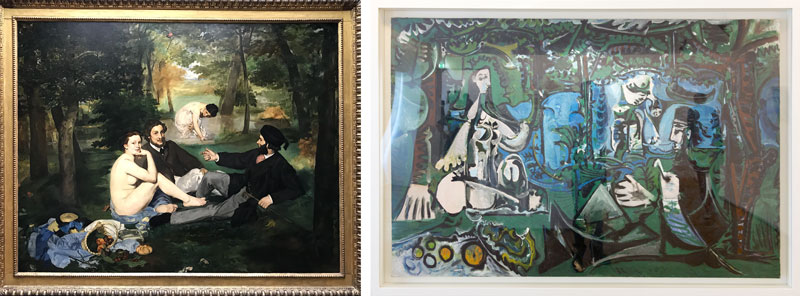
Aside from being inspired by paintings, Picasso was also inspired by masks. Specifically ancient Iberian and African masks. One source shares that “Les Demoiselles had ended up as a hybrid of primitive styles, with dissimilar Iberian and tribal forms squaring off against each other to create a jarring, dissonant effect.” We can see in the comparisons below that Picasso was definitely living up to his famous quote, “good artists copy, great artists steal.”
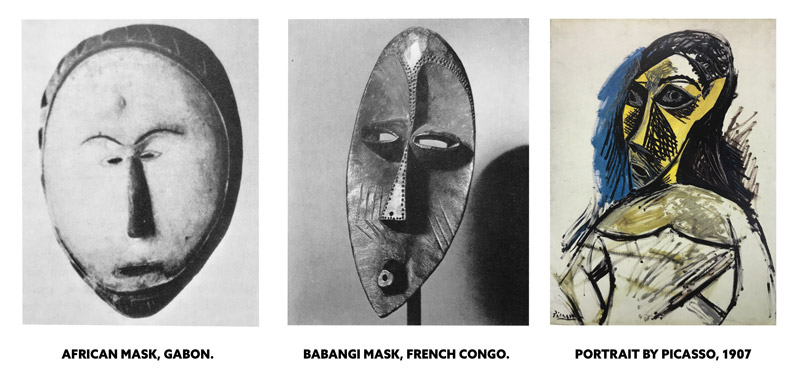
As part of Picasso’s feverish research, he apparently flipped through some of his older work to find a composition that he thought deserved further development. In 1906 he had a painting of a brothel scene that was more reminiscent of his “Rose Period” (1904-1906). This sent him on a journey towards his masterpiece, which was finished in July, 1907.
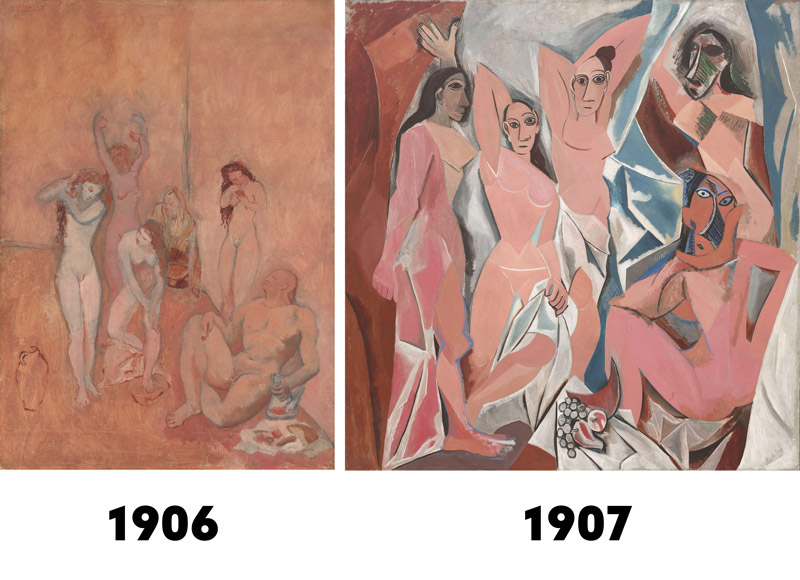
Here are some of his preliminary sketches working up to the summer of 1907.

From the books previously mentioned, we can see how his sketches are from around March, 1907. About three months before his final painting. Super rough, but very important for his process. For your own development, use sketches or snap shots as preparatory studies. The purpose is to get the ideas out of your head and into some sort of visual form. The technique, composition, and lighting doesn’t matter as much for these studies.
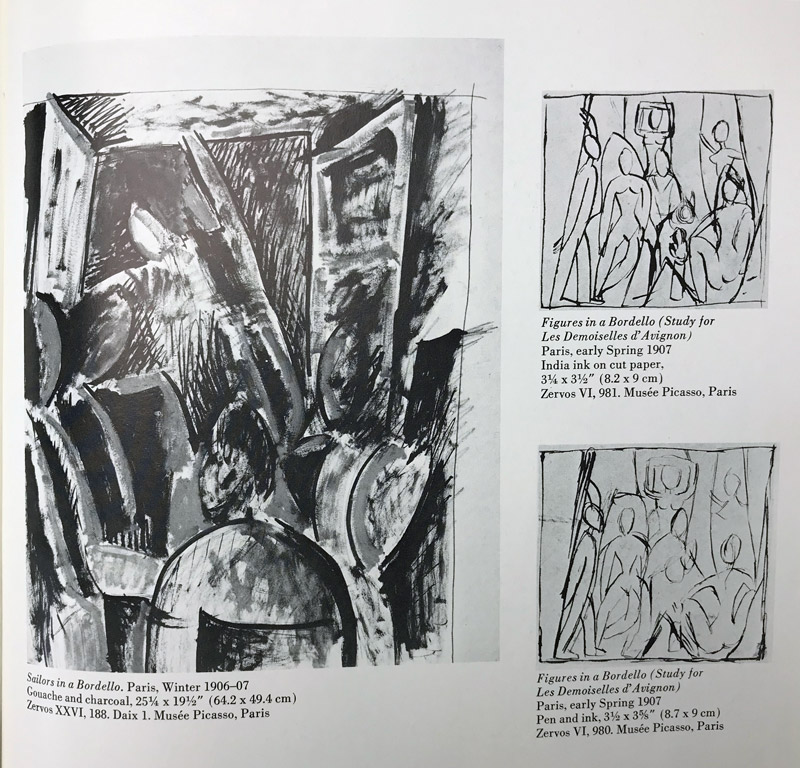
With the examples below, we have five studies that are almost identical. He’s quickly working out the kinks and shuffling the figures around for a final composition.
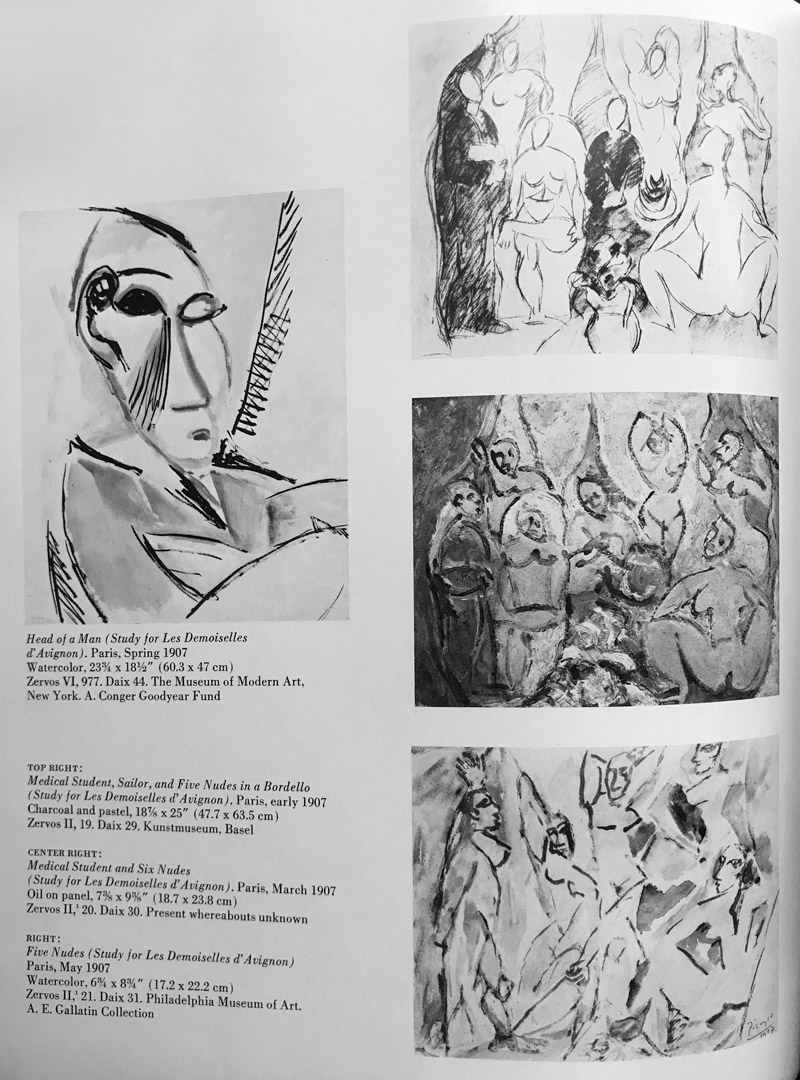
These are other preliminary sketches used to develop the features of the figures. The influence of the masks is becoming more and more evident.
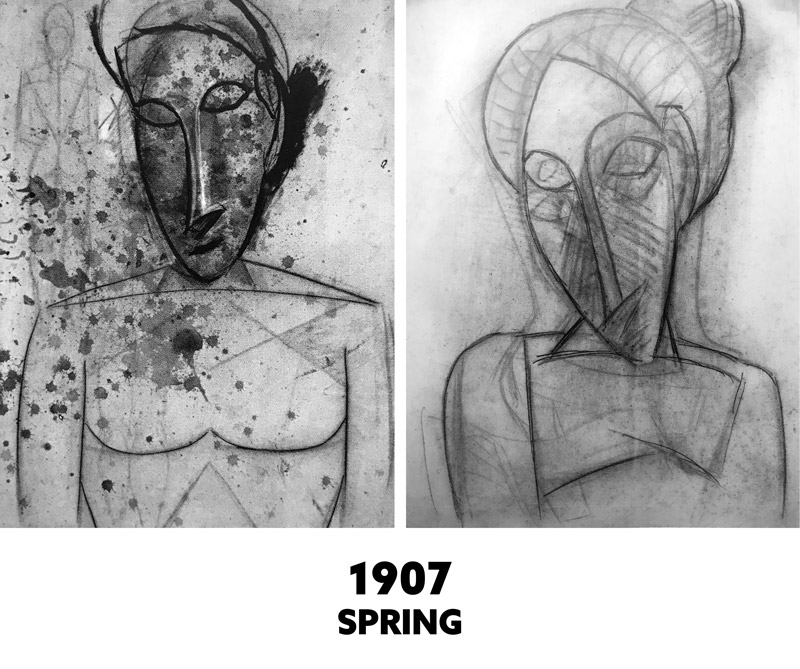
And you thought he had already done enough. Look at all of this…it keeps going! All of these are from early 1907.
In the Picasso Drawings book, they compare his work with Michelangelo.
“The energy and distortions of the nude, dramatic foreshortening, and combination of red and black bring to mind the monumental figures of one of the world’s greatest draftsmen, Michelangelo, whose drawings were accessible to Picasso in the original at the Louvre and in reproduction.”
Here we can see more paintings from early 1907, where he continues to develop the features.
These studies by Picasso, one being watercolor, are preliminary works that lead up to the final painting. One source reads that “Les Demoiselles d’Avignon was the most difficult and revolutionary work of Picasso’s career, and it profoundly disconcerted even his supporters when first exhibited in 1916.”
This painting not only shocked the art world, but it also lead Picasso into cubism; solidifying him as a leader in the art world.
“Through long days – and the nights as well – he drew, concretizing the abstract and reducing the concrete to its essentials. Never was labor less paid with joys, and it was with none of his former juvenile enthusiasm that Picasso set to work on a major picture which was intended to be the first application of his researches.”

If we look back and compare the months and years, we can see how he made drastic changes in his style tremendously quick. In 1906, we see his new style emerging in a matter of months. That’s how much work he put into it!
Take a look at the difference in two years. Wow, what a change! Even if you don’t like Picasso or his art, this is a lesson that is undeniably valuable.
To summarize what we’ve learned so far:
First analyze artists that you like. Extract your favorite things about their style and write them down. Is it their lighting, makeup, wardrobe, brush strokes, subject matter, environment, length of hair, colors, or compositions?
Second, do master copies.
Third, make snapshots or rough sketches and analyze them for things that interest you. Did you transform your inspiration into visual form? Try to refer to your notes and other preliminary work.
Fourth, continue to develop by repeating the previous steps. You can never do too much digging and preliminary work.
Fifth, put it all together when you feel you’re ready and make your masterpiece.
Reinventing Your Artistic Style
As the years pass, you may have to reinvent your style again. For example, Picasso was eventually pigeonholed into Cubism. He disliked feeling trapped by that particular style, so to help him break free of the mold they started exhibiting his master copies. Picasso wanted “openness and exploration” rather than “dedication to a particular style.” This angered the critics that were use to his cubism paintings and wrote that everything could be found at his exhibition “including Leonardo, Durer, Le Nain, Ingres, Van Gogh, Cezanne, yes, everything…except Picasso.”
This is a great example of how strong your artistic style can be. These critics were disgruntled because they were there to write about the exciting cubist art they’ve grown to love, not something else.
You can always set out on another path if the previous one gets stale, but be aware of how it affects your followers. On the bright side, if you do set out on a new path it might be exciting for a lot of your followers to experience. Some of them might enjoy the journey of growth…once your new style starts to develop.
Conclusion
Digging deep and developing a style in such a rapid pace might not be for everyone, but it sure is interesting to see how it can be done. Is your art needing more direction? Heck, maybe you can give this a try and cut your 10,000 hours down by 75%. Get inspired by other artists, take notes, and do some rough sketches. Continue to develop your style until you’re feeling good and ready to put it into action.
That’s it for this one, thanks for joining in. See you in the next one!


